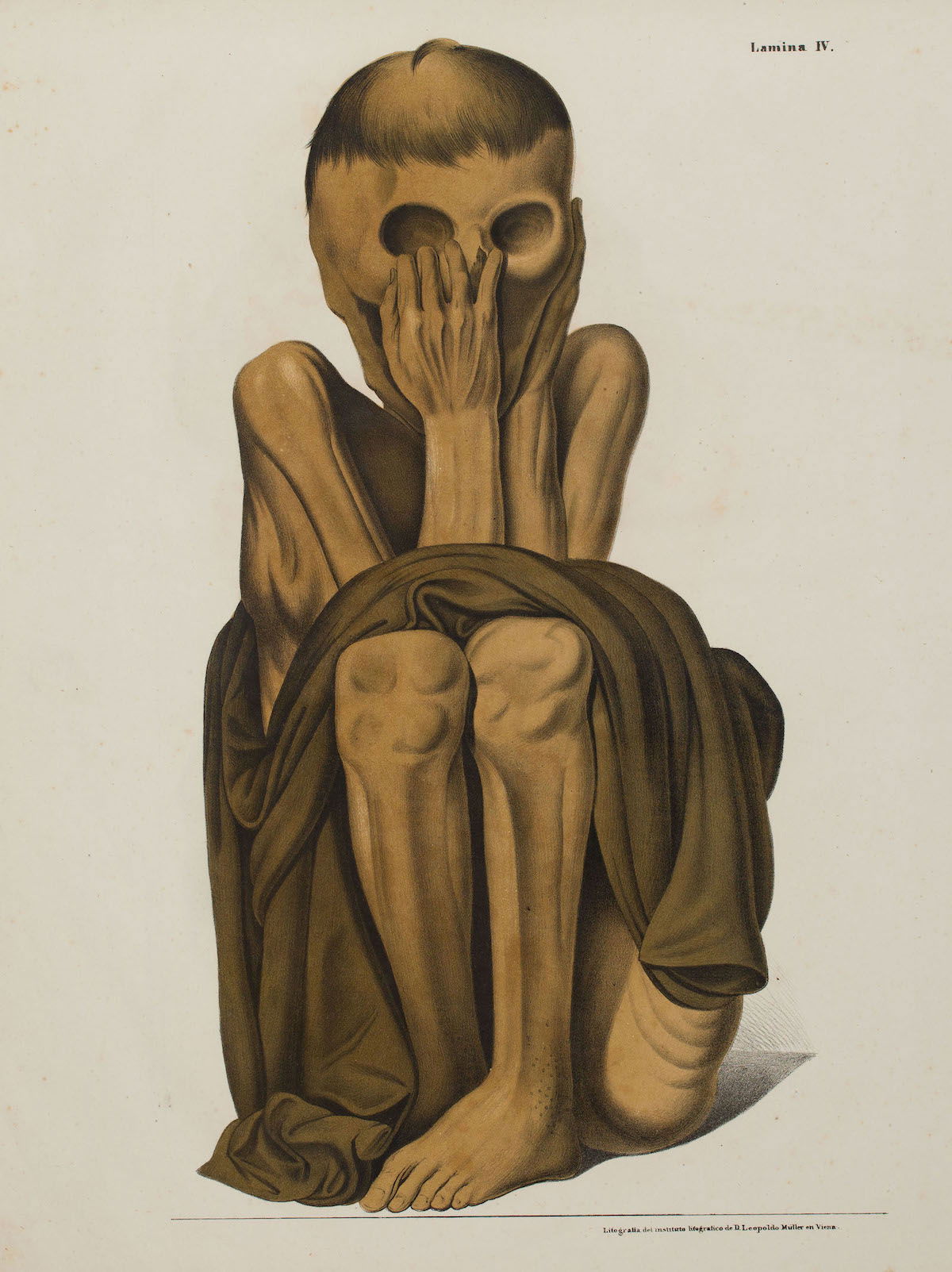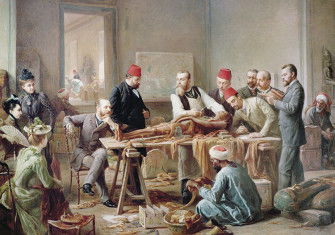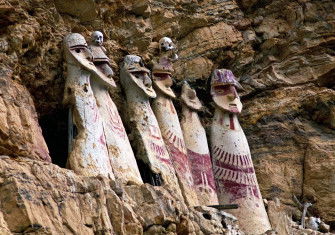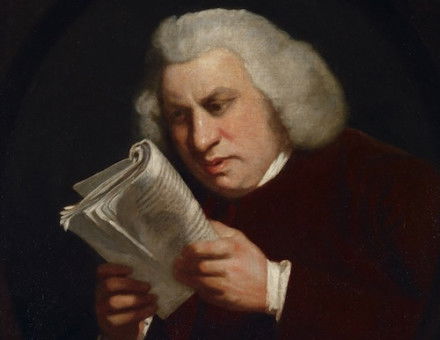When Inca Mummies Came to Europe
Older than their Egyptian counterparts, the preserved remains of Andean peoples fascinated 19th-century Europe, leading to a ‘bone stampede’ for Inca mummies. But to what end?

In 1822, the South American revolutionary José de San Martín sent King George IV an Inca from Peru. The voyage was hardly remarkable in itself; Indigenous leaders had sailed to Europe since Columbus. But this Inca was certainly the oldest to make the trip. He was bundled aboard HMS Conway, where captain Basil Hall cared for his aged frame. Hall observed that the Inca spent the entire trip in the same cramped position: ‘knees almost touching his chin, the elbows pressed to the sides, and the hands clasping his cheek-bones.’ His teeth were flawless, but his body was ‘shriveled up in a remarkable manner’. His exposed shoulder bones could hardly have been comfortable, Hall sympathised, and his ‘countenance’ was ‘an expression of agony very distinctly marked’. But Hall did his duty and on arrival delivered ‘my friend the Inca’ to independent Peru’s first diplomats in England. Those diplomats then gave the Inca to the Crown with San Martín’s hopes that he might receive the welcome he deserved: a place at the British Museum.







